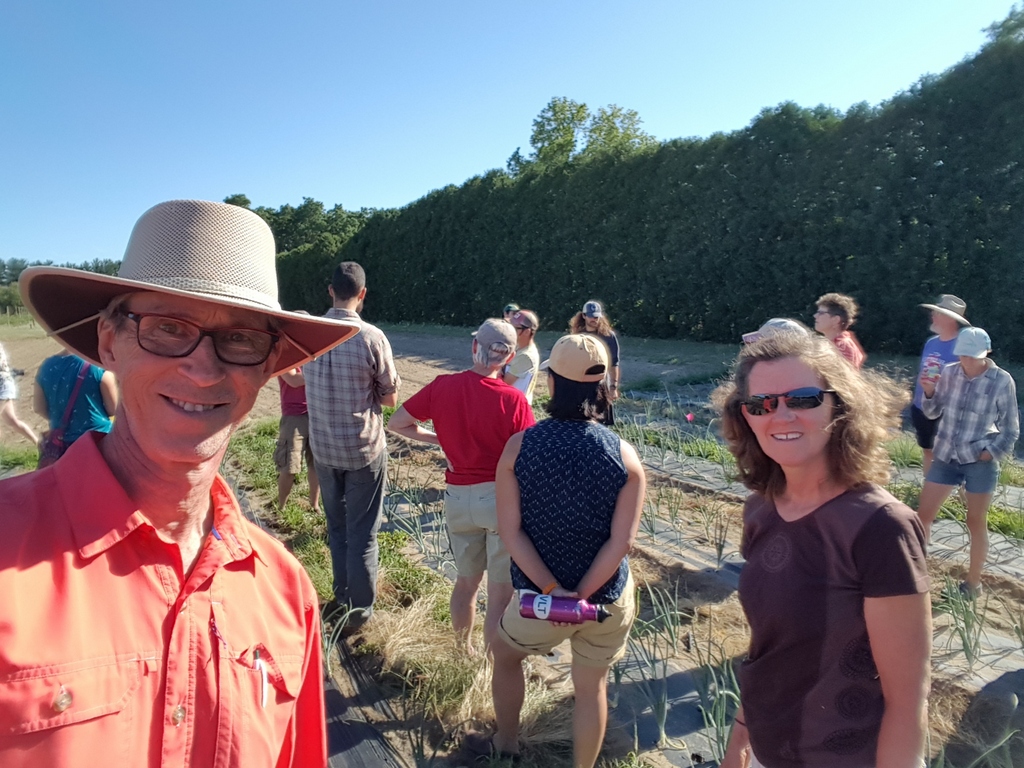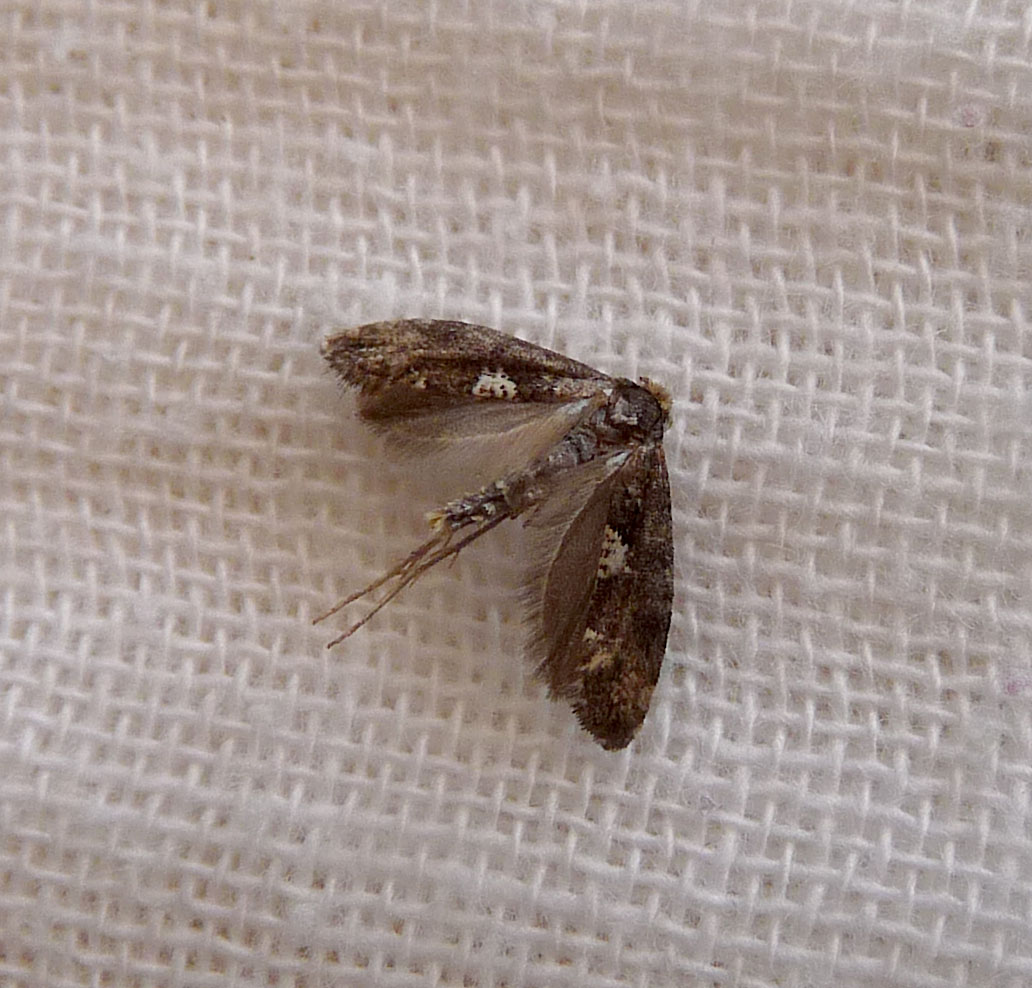Last season we noticed deterioration on garlic and onion plants. When we reserved garlic heads for seed, there seemed to be more than usual rotten cloves and heads.
This season, with more plant damage evident, we learned why. A pest called the leek moth has migrated southeast from Québec into Vermont. Gardeners attended a leek moth study workshop at the University of Vermont Horticulture Research Center.

485 Elm gardeners attend the leek moth study workshop at the University of Vermont Horticulture Research Center in South Burlington
The UVM Horticultural Center is seeking ways to combat this pest. A promising experiment is the introduction of trichogramma wasps. The wasps lay their eggs in the leek moth eggs. Instead of a leek moth larva, a wasp larva emerges.
Other methods include:
- Hand-picking the larvae and leaves containing them when they’re beginning to feed
- Harvesting early, before the larvae can get down into the plant bulb and destroy the garlic head
- Applying row cover early in the growing season, then uncovering plants daily and recovering them nightly (the moths are night fliers). An alternative, bug netting, could remain over the plants day and night, but no weeding would be possible
- Doing nothing at all to observe how much damage the plants actually incur

The leek moth is 5 mm to 7 mm long. It lays eggs on alliums (e.g., garlic, leeks, and onions). The larvae hatch, chew their way into the plant, and eat as much as possible. Then they spin a cocoon and, eventually, emerge as a new leek moth. The cycle repeats two to four times a season. Photo by gailhampshire from Cradley, Malvern, U.K (Leek Moth?. Acrolepiopsis assectella) [CC BY 2.0 (https://creativecommons.org/licenses/by/2.0)], via Wikimedia Commons
UPDATE: We wondered if we were going to lose our entire leek crop to the leek moth. But the garlic harvest is glorious, perhaps the most prolific we’ve had. The garlic bulbs show no damage. We harvested the entire garlic crop within a week of the date of last season’s harvest. We snipped all the stalks off the harvested garlic to prevent any leek moths from burrowing down into the bulbs while the garlic dried.





